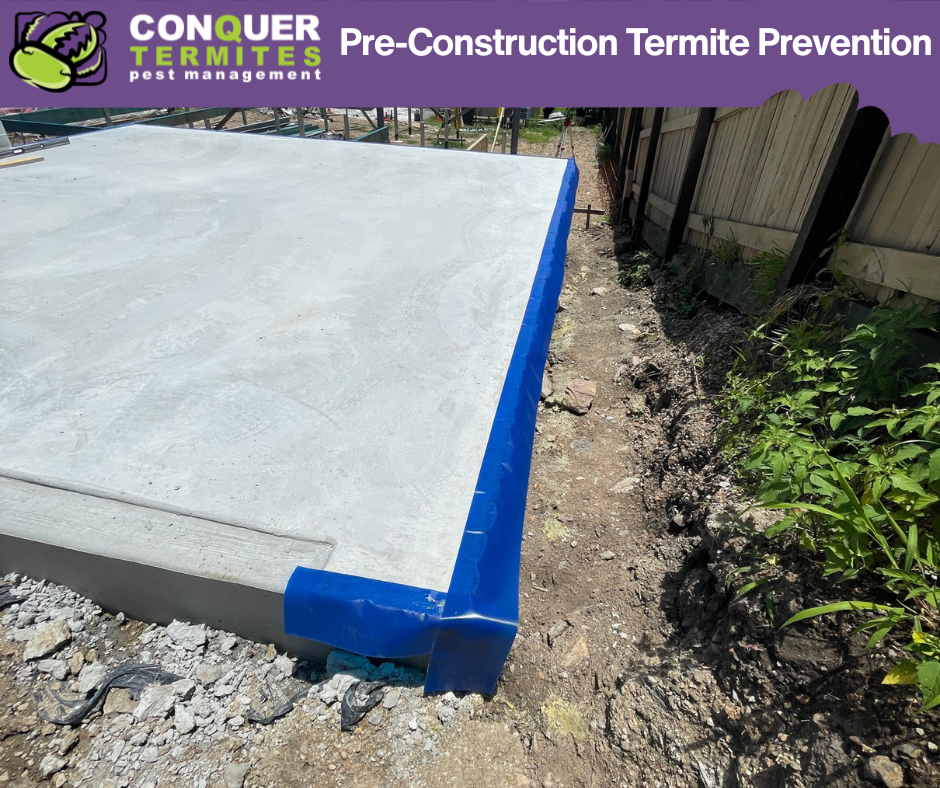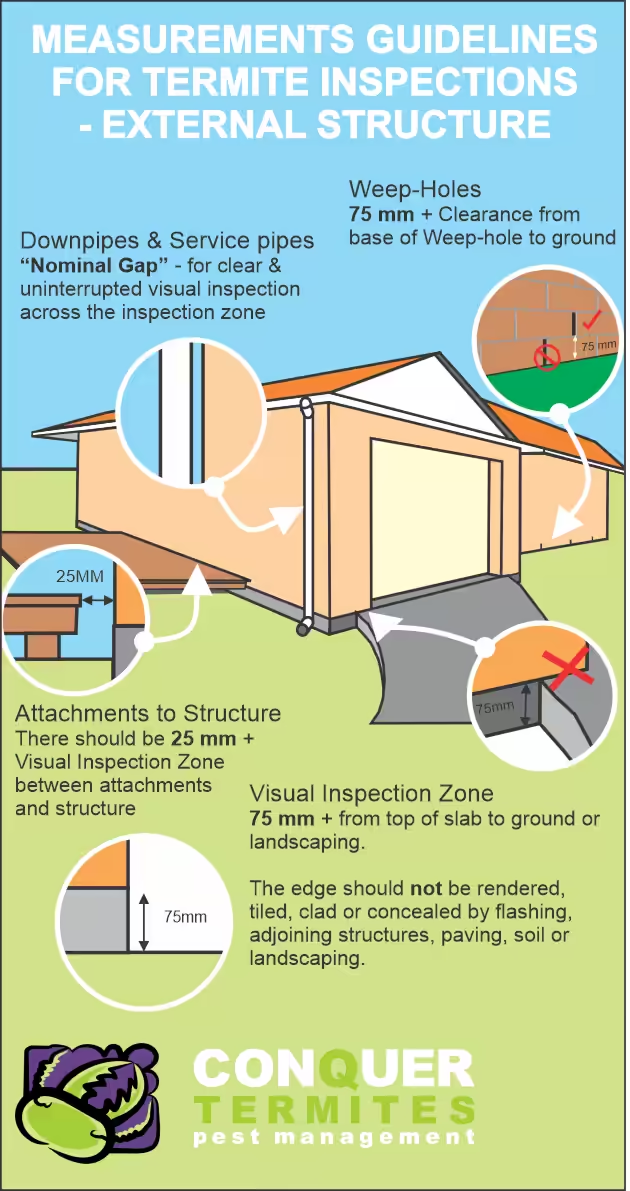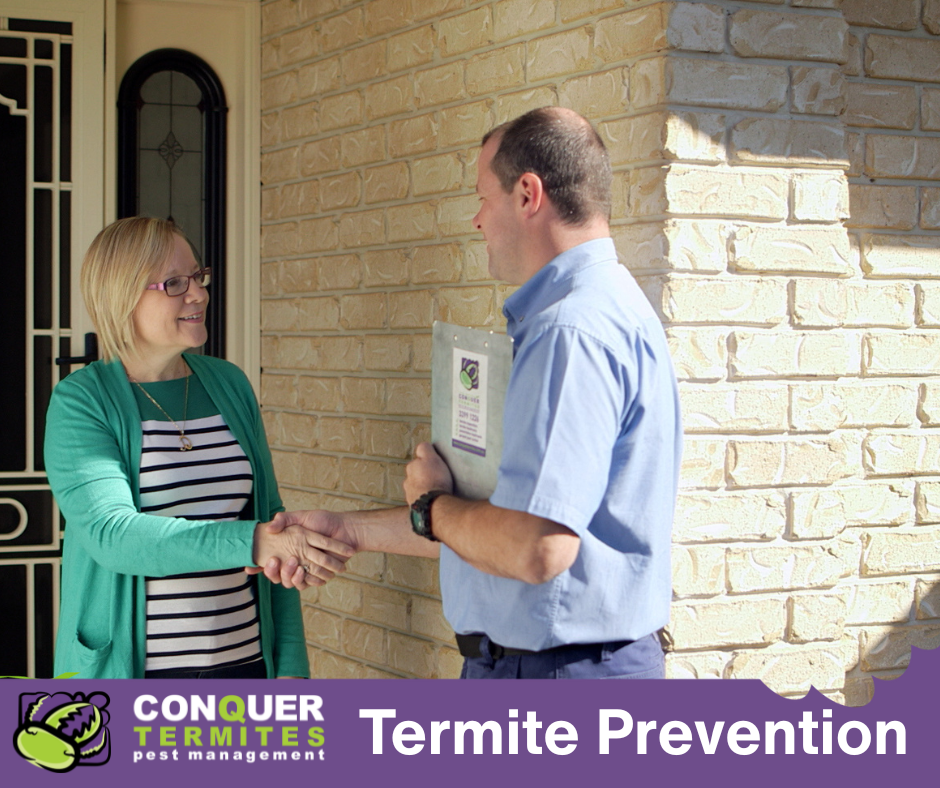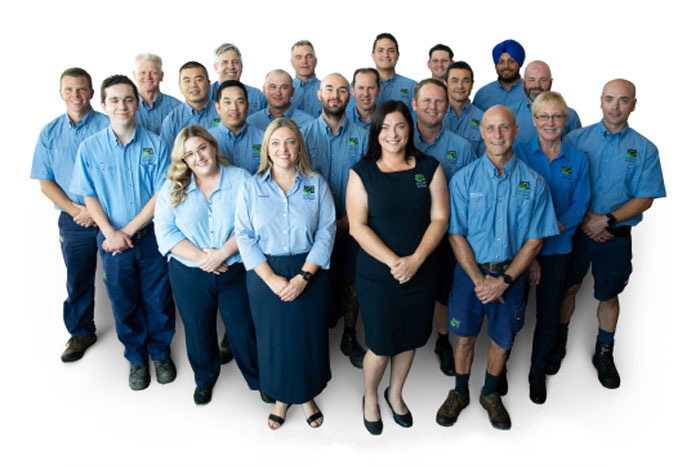Living in South East Queensland means enjoying sunshine, subtropical weather—and unfortunately, living in one of Australia’s highest-risk termite zones. Termites are silent destroyers, often causing thousands of dollars in damage before they’re even noticed. That’s why prevention is the best termite protection you can have.
Below, we explain what you can do to prevent termites in both new homes and existing properties.
🏗️ 1. Pre-Construction Termite Protection
If you’re building a new home, the most effective termite prevention starts before the first brick is laid. In Queensland, the National Construction Code (NCC) requires a termite management system to be installed during construction. This can include:
- Chemical soil treatments before pouring the slab
- Physical systems such as termite mesh or sheeting
- In-slab systems like reticulation pipes that allow future chemical reapplication
These systems are designed to prevent concealed termite entry and force any activity into the open where it can be spotted. But it’s important to remember: even the best system won’t eliminate the risk entirely—regular inspections are still essential.

💧 2. Control Moisture Around Your Home
Termites are drawn to moist, damp conditions. Water leaks and poor drainage can create ideal nesting conditions. Here’s how to reduce the risk:
- Fix leaking taps, pipes, air conditioning overflows, and guttering
- Ensure water drains away from your home’s slab or perimeter
- Keep the roof void and subfloor (if you have one) well-ventilated and dry
- Avoid storing anything damp or organic in roof voids
By controlling moisture, you’re making your home a much less attractive target.

🌳 3. Avoid Timber-to-Ground Contact
Termites naturally live in the soil and love easy access to timber. To make your property less inviting:
- Remove tree stumps, old sleepers, and timber edging in contact with soil
- Avoid placing firewood against exterior walls
- Keep pergolas, decks, and timber posts elevated with stirrups or ant caps
- Use termite-resistant or treated timber when possible
Even small items like timber garden stakes can attract termite attention if left unchecked.

🔍 4. Maintain Clear Visual Inspection Zones
In Queensland, homes should have unobstructed slab edges or inspection zones to allow for visual detection of termite entry. To maintain these:
- Keep gardens, mulch, or paving away from the slab edge
- Never render over weep holes or conceal slab joins
- Ensure perimeter paths or tiles don’t sit higher than your internal floor level
If termites do attempt to breach your home, these inspection zones help you—or your pest professional—spot the signs early.

🕵️ 5. Book Regular Professional Inspections
Even with all the right prevention steps in place, an annual termite inspection is essential. It’s required under Australian Standard AS3660.2, and it’s the only way to detect hidden activity before it becomes serious.
A licensed technician will check:
- The perimeter of your home
- Roof voids and subfloor areas
- Landscaping, retaining walls, timber fences, and garden beds
- Any evidence of termite mud tubes, damage, or high-risk conditions
- Use inspection devices such as a thermal camera, moisture meter and termatrac to detect hidden termite activity or moisture

Final Thoughts
Preventing termites isn’t about one single solution—it’s about reducing risk through smart building, good maintenance, and regular inspections.
If you’re concerned about termites around your Brisbane or Gold Coast home, or just want peace of mind, our team at Conquer Termites is here to help. We offer detailed inspections, expert advice, and effective treatment options tailored to your property.
📞 Contact us today to book your inspection or discuss your termite prevention plan.
Call us on 1300 417 007
More information:



